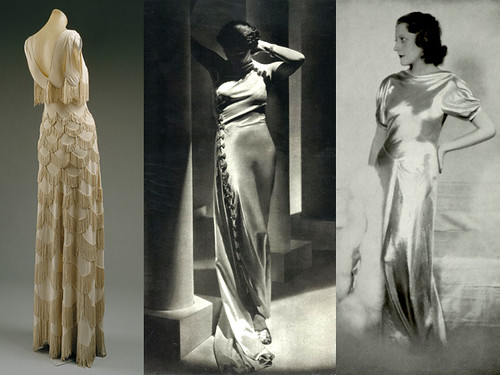Understanding Grainlines
First, Happy new month to you. I hope to see more of you here thanks for dropping by. Now on to the post proper.
It is important in sewing that you understand grain-lines. The fabric has grain-lines. sewing patterns including mine are annotated with a long arrow denoting the direction in which you should place your fabric.
It is important in sewing that you understand grain-lines. The fabric has grain-lines. sewing patterns including mine are annotated with a long arrow denoting the direction in which you should place your fabric.
The lengthwise
grain of fabric:- Are the fabric thread/yarns that are parallel (purple lines) to the selvedge
( or "Eti Aje")
The cross-grain are the threads perpendicular (blue lines) to the selvedge


The true Bias grain: is at angle 450 to both the length and cross grain denoted by red line. An easy way of identifying the bias grain when cutting is to fold the fabric as below.
The body also has
grain-line. Lengthwise & Cross. In designing patterns, the grain line is
drawn parallel to the centre front or centre back.
Usually the lengthwise grain of the fabric is aligned to the lengthwise grain of the body and the cross-grain to the cross-grain of the body. Generally, the grain -line indicated on patterns should be placed parallel to the selvedge ( that is the lengthwise grain of the fabric). The lengthwise and cross- grains are collectively known as the straight grain.
Usually the lengthwise grain of the fabric is aligned to the lengthwise grain of the body and the cross-grain to the cross-grain of the body. Generally, the grain -line indicated on patterns should be placed parallel to the selvedge ( that is the lengthwise grain of the fabric). The lengthwise and cross- grains are collectively known as the straight grain.
For example if a bodice pattern has grain line indicated (green arrow on pattern image),
Ideally, it should
be placed like in the image below. This will place the cross-grain of the
fabric on the breadth of the body which is desirable since the cross-wise grain
has more give and will stretch ever so slightly to give room//comfort.
Make sure that the
grain-line of the pattern ( indicated by green arrow) is truly parallel to the selvedge by ensuring that the distanced
from the selvedge to each arrow tip is equal to each other. But the truth is that most times, I eyeball this
distance. If the difference between the 2 lines is great, then you will cut out
a skewed, off grain piece. Cutting off grain is the major reason for unsightly
twists in sewn dresses, twists you will iron from now till thy kingdom come and
will still persist. The twist might go unnoticed on Ankara African wax prints
since they are relatively stable fabrics. Try cutting off grain on soft, light, badly woven fabrics then you might see the effect.
At times when
managing fabric or for whatever reason you can lay your pattern as below. Just
ensure it is truly parallel and not skewed.
You could also align
to the bias as below. the green grain line is drawn at 450 to the Centre Front of the pattern
Note also that,
Now the bias is very
interesting. It drapes beautifully, it is stretchy and clingy . it is usually
used in high end/ dinner dresses. Cutting on the bias utilizes more fabric and
needs a more careful handling when cutting and sewing.
 |
| Bias Cut dresses by Madeliene Vionet- The Queen of the Bias Cut Image Source: design086.tumblr.com (via google images) |
A good sewer/designer must
understand the effects of the grain lines and how he can use in his designs. The rule of thumb is to align the grain line annotated on a pattern to the length-wise grain of fabric but adjustments could be made for design or fabric management purposes.
One of our forthcoming pattern (Watch-out!) is cut completely on the bias but one could cut it on the straight grain just
to see the effects of grain lines.
hope you found this post helpful. If you did, you can drop me a line in the comment section. You can also like our Facebook page here. Coming soon is the launch of my sewing patterns. Stay tuned.






Lol @ "till thy Kingdom come".
ReplyDeleteWell put together. Thank you
Very informative. Thanks for this great tutorial
ReplyDelete